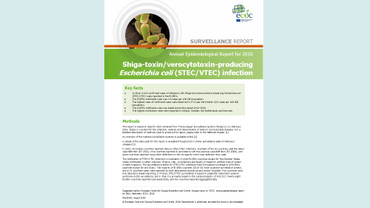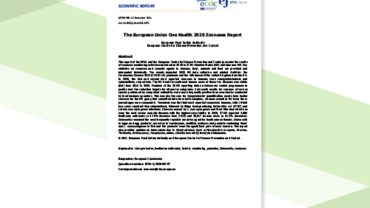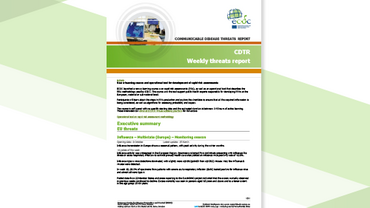Fifth external quality assessment scheme for typing of verocytotoxin-producing Escherichia coli (VTEC)
This report presents the results of the fifth round of the external quality assessment scheme for typing of verocytotoxin-producing E. coli (VTEC) (further EQA-5) funded by ECDC. The EQA-5 was carried out from January 2014 to May 2014 and included the following methods: pulsed-field gel electrophoresis (PFGE), O:H serotyping, detection of virulence genes (eae, vtx1, vtx2 and ehxA), subtyping of the vtx genes, phenotypic detection of verocytotoxin/Shiga toxin production (VT/Stx), fermentation of sorbitol, production of beta-glucuronidase, enterohaemolysin, and extended beta-lactamase (ESBL).
Executive summary
A total of 29 laboratories participated in at least one part of the EQA-5. Twenty laboratories (69%) reported PFGE results, 12 laboratories (41%) participated in full O:H serotyping of all strains (26 laboratories submitted O group results for at least one strain and 19 laboratories submitted H-types for at least one strain). Genotypic detection of eae, vtx1 and vtx2 was performed by 26–28 laboratories (an average of 89-97%), 19 (66%) for ehxA, and 22 (75%) participated in subtyping of vtx genes. The average participation in phenotypic detection was eight laboratories (28%) for VCA (Vero cell assay), 26 (90%) for fermentation of sorbitol, 15 (52%) for betaglucuronidase, 14 (48%) for enterohaemolysin and 18 (62%) for ESBL.
Twenty laboratories participated in the PFGE part of the EQA-5, and 12 (60%) were able to produce a PFGE gel of sufficiently high quality to allow comparison with profiles obtained by other laboratories. The subsequent normalisation and interpretation of the profiles were performed using the specialised software suite BioNumerics (BN). Seventeen laboratories completed the gel analysis, and 65% performed in fair to good accordance with the guidelines.
Of 12–19 participants, an average of 69% (range 58–100%) could correctly determine the O:H serotype of the strains (some laboratories only typed a selection of the test strains). The more common serotypes received better typing results: O157:H7 was typed correctly (100%) by all 19 participants, while O145:H34 was associated with a significantly poorer result (58%).
The results for the genotypic detection of virulence genes were generally very good: eae (98%), vtx1 (98%), vtx2 (94%) and ehxA (98%). False positive results were reported five times for vtx1 , one for vtx2 . One false negative result was received for vtx1 , but 15 for vtx2 (10 of these were failure to detect the vtx2f gene). The virulence genes aggR and aaiC were submitted by 20 and 16 participants, respectively. The aggR and aaiC positive test strain was correctly determined by all participants; however two laboratories submitted false positive aggR results for one or two other strains.
The percentage of correct results for phenotypic detection was 86% for VT, 97% for fermentation of sorbitol, 90% for beta-glucuronidase, and 94% for enterohaemolysin. All participants correctly determined ESBL.
This EQA-5 scheme is the second EQA specifically organised for laboratories participating in the European Food- and Waterborne Diseases and zoonoses network (FWD-Net) that includes molecular typing method. The number of participating laboratories in the EQA-5 is encouraging. The molecular surveillance system relies on the capacity of the FWD-Net laboratories to produce comparable typing results and follow the ECDC guidance for VTEC detection. At the moment, the molecular typing method used for EU-wide surveillance of VTEC is PFGE. The surveillance of VTEC infections also relies on conventional typing/phenotypic strain characteristics in combination with molecular typing. However, the PFGE results of the EQA-5 show that 40% of the laboratories need to improve their performance in order to produce useful typing profiles for an inter-laboratory exchange. However, for the majority of laboratories with identified technical issues, achieving an acceptable quality level is within reach if they optimise procedures, receive trouble-shooting assistance, and additional training.






